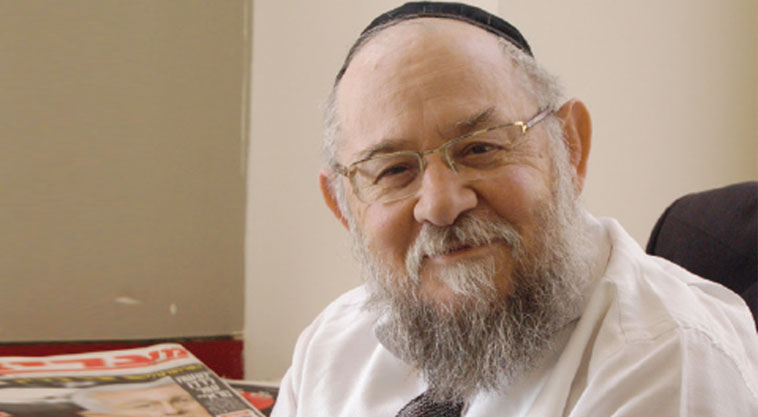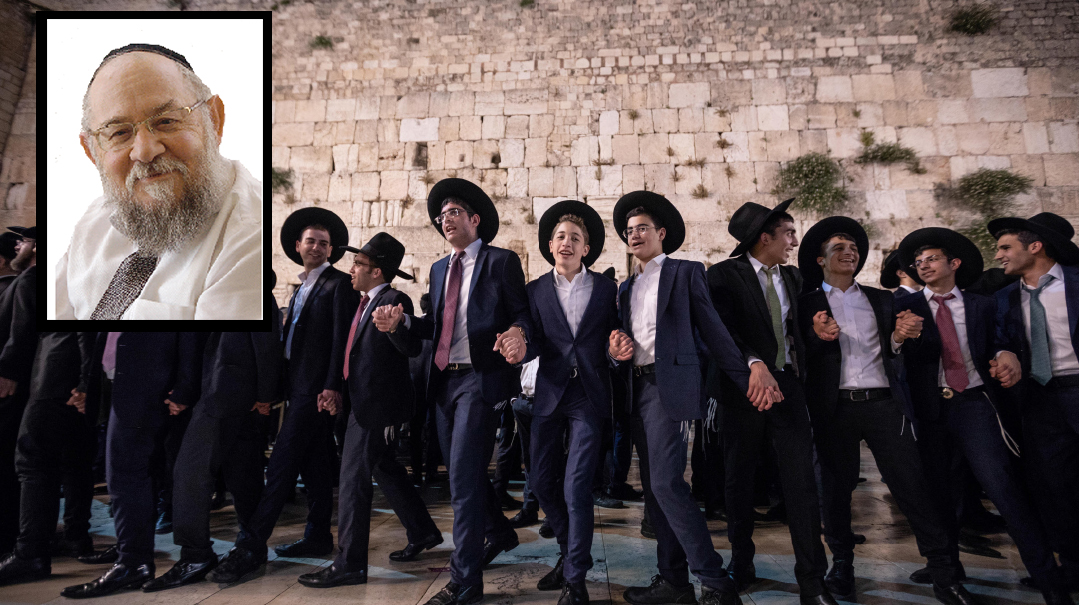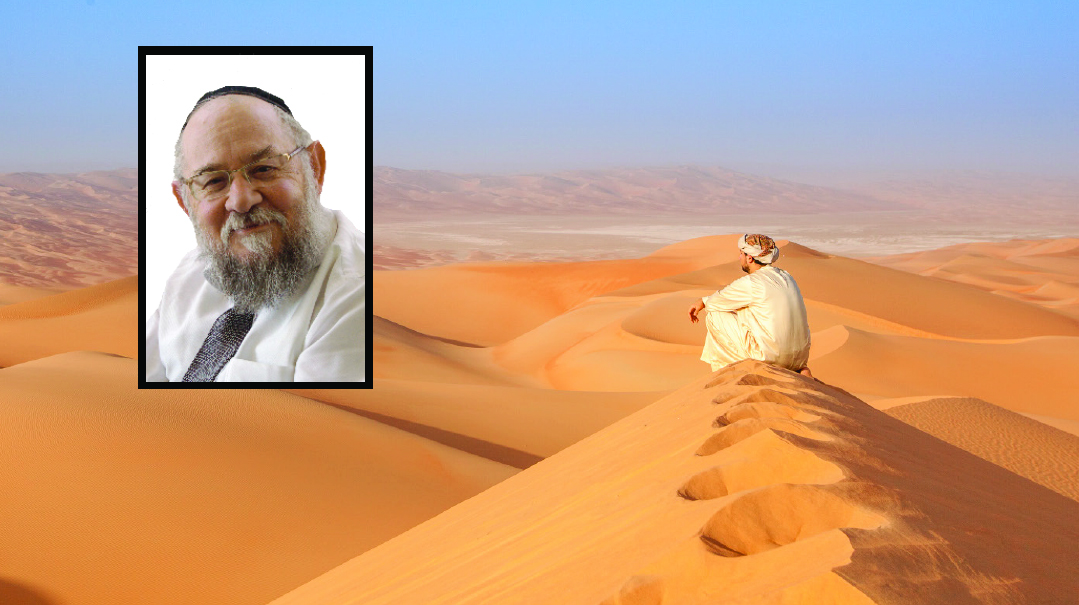Spiritual Tug of War

I
confess that I somehow overlooked the animated back-and-forth that took place recently in these pages concerning what is sometimes labeled “neo-chassidus,” and by its proponents, simply chassidus. Only when a friend who serves as a mashgiach at a yeshivah in Israel for American high school graduates wrote asking me to urge Mishpacha to publish an article on the topic from a figure representing “daas Torah,” did I go back and read the entire fascinating exchange.
What follows is not an attempt to resolve that earlier debate — a task for which I am eminently unqualified — but to offer a perspective on such disputes in Torah shittos.
I told my friend — someone whom I respect greatly — that I’m doubtful the clarity that he seeks on the subject is attainable, i.e., that there is a unitary “daas Torah” position. At the most, the authority or authorities from whom he wished to hear could have enunciated some warning signs of what is clearly unacceptable — for instance, an emphasis on practices with little halachic basis while downplaying aspects of basic halachic observance, or an overemphasis on gathering around a charismatic figure.
But beyond that, they would have undoubtedly concluded that the question of how to connect to Hashem, within certain fixed contours, will inevitably vary from individual to individual. As Chazal say, just as no two individuals look exactly the same, so too will no two individuals be exactly the same in their deyos, i.e., in the way in which they experience and interpret the world.
Rav Yaakov Kamenetsky, in many respects the exemplar of the classic Litvak, used to tell parents who complained that their children were attracted to chassidus that, in general, each neshamah knows what it needs.
OVER THE PAST TWO AND A HALF CENTURIES, the Torah world has witnessed at least two major innovations. The first was the birth and rapid spread of the chassidic movement, and the second the entry of the mussar movement into the world of the Lithuanian yeshivos. Both were responses, inter alia, to a feeling that something had become dry in religious observance, or even Torah study — a feeling shared by many Jews nevertheless seeking a more intense connection to Hashem.
Both movements encountered fierce opposition. The Vilna Gaon, widely considered the preeminent authority of the last 400 years, pronounced a cherem on the chassidim of Vilna. And a century later, fierce debates over mussar tore apart many of the great Lithuanian yeshivos. Rabbi Dov Katz’s multi-volume work on the great figures of the mussar movement, Tenu’as Hamussar, originally included a volume called Pulmus Hamussar, containing many of the published attacks on the mussar movement. It is today a collector’s item, but no longer generally available, so fierce were the attacks.
With historical hindsight, we can see that the chassidic movement did not result in a recurrence of the excesses of messianic enthusiasm roused by the false messiah Shabbetai Tzvi, as feared. And the survival of Torah Judaism, in the face of all the disruptions and horrors of recent centuries, owes much to chassidism and the intense emunah it instilled in so many Jews.
Similarly, the study of mussar has become a standard part of every yeshivah curriculum, albeit in an attenuated form.
Does that mean, then, that opponents of the two movements were self-evidently wrong, like those members of kibbutzim who identified with Stalin in the early years of the State of Israel, and split entire kibbutzim and families apart out of their loyalty to the Soviet Union? Is the only lesson that history teaches us: When one observes a trend in Jewish behavior or thought that one sees as fraught with danger, hold your tongue and pen?
I don’t think so.
My starting point is an insight that I once heard from Rav Ahron Lopiansky (and which I have quoted before). He asked: Why, if Yaakov Avinu represents the culmination of the Avos, did HaKadosh Baruch Hu not simply start with Yaakov Avinu, the perfect balance of chesed and din?
The answer would appear to be that the perfect balance can only be achieved through a dialectical process, and the juxtaposition of opposing qualities. Both must be openly expressed before they can be melded in any fashion. Thesis and antithesis are necessary parts of a higher synthesis.
The Tzemach Tzedek, the third Rebbe of Lubavitch, famously made this point when he said that it is possible that but for the opposition of the Vilna Gaon, the fires of chassidus would have consumed the nascent chassidic movement.
Or let us take a more recent example of another potential benefit of machlokes. Aish HaTorah and Ohr Somayach have been the two largest institutions for kiruv of male baalei teshuvah over the past four decades. They were originally a single institution that split apart over the contrasting visions of kiruv of the founding partners.
I’m frequently asked, “Isn’t it a tragedy that the partners could not reconcile their differences and remain together?” To which I answer emphatically, “No.” Those conflicting visions were ultimately irreconcilable; no grand synthesis was possible. But, in the long run, the Torah world ultimately benefited from the existence of two separate institutions and from the fact that the founders were each able to freely articulate their contrasting visions. There have undoubtedly been hundreds of baalei teshuvah who became observant in one institution who might not have in the other.
And over the decades since the original split, the two institutions have grown more similar, while each guarding its founder’s original vision, they have borrowed certain aspects of what is best about the other.
THE VARIETY of approaches to kiruv is a feature, not a bug, because it reflects the inherent differences between Jews. In almost every aspect of avodas Hashem, there is a delicate balance between what is fixed and objective, and that which will vary according to the needs of the individual to connect to Hashem.
Rav Yitzchak Breitowitz recently cited a comment from sifrei chassidus to make this point. The question is asked why the traits that disqualify a Kohein from service in the Beis Hamikdash and those that disqualify a Levi are different, and vice versa. The answer given is that the Kohanim represent that aspect of the Divine service that is fixed and from which any deviation will invalidate the korban. A Kohein who decides to add a beautiful scarf to his bigdei kehunah has the status of a merubah begadim, and any korban he brings is passul. Just as the avodah of the Kohein must be performed exactly, so do certain physical imperfections render him unfit to serve.
The avodah of the Leviim, by contrast, depends to a far greater extent on the internal individual kavanah. Though today we have specific Psalms that we recite for each day, “just as the Leviim recited them in the Beis Hamikdash,” obviously the Leviim did not recite these Psalms before Dovid Hamelech composed them. Thus the singing of the Leviim expressed to a greater extent the individuality of the particular Levi.
For that reason, the physical imperfections that rendered a Kohein invalid to serve had no such impact on the Levi. But the Leviim were barred from service at the age of 50 — a bar that has no parallel for Kohanim — because the creativity, enthusiasm, and fervor of the service of the Leviim becomes much more difficult to attain as one grows older.
How much of that hischadshus each of us needs will vary from individual to individual, even as the objective framework for avodah remains, like that of the Kohanim, fixed and unchanging. In the former aspect of the avodah, one size cannot fit all.
By providing highly articulate spokesmen for two conflicting viewpoints, Mishpacha provided a valuable service, even if there can never be any final, single resolution for an entire nation. Those opposing viewpoints open up for the Torah world paths of service according to the needs of each neshamah. But at the same time, those warning of deviations from the traditional, the objective, and the fixed, provide an important corrective, and serve to protect us from the dangers of excessive individuality.
Originally featured in Mishpacha, Issue 718. Yonoson Rosenblum may be contacted directly at rosenblum@mishpacha.com
Oops! We could not locate your form.




